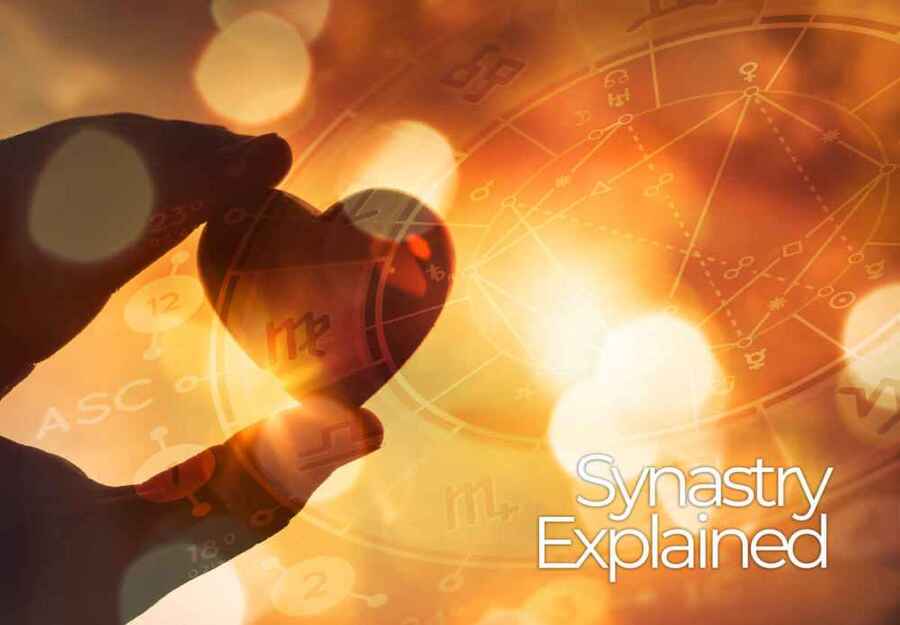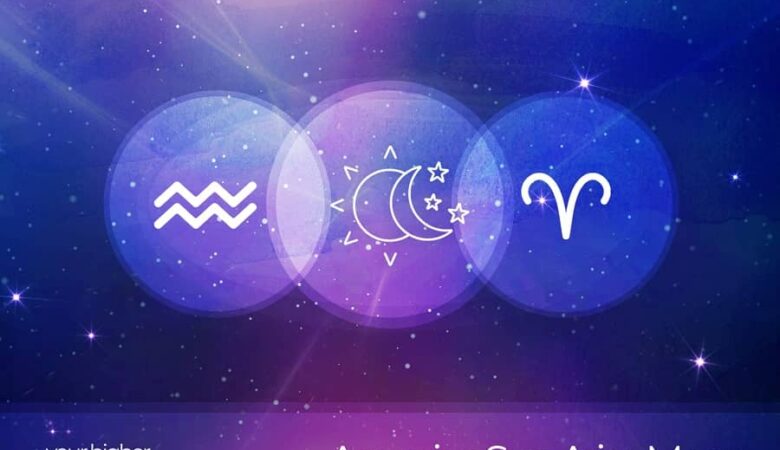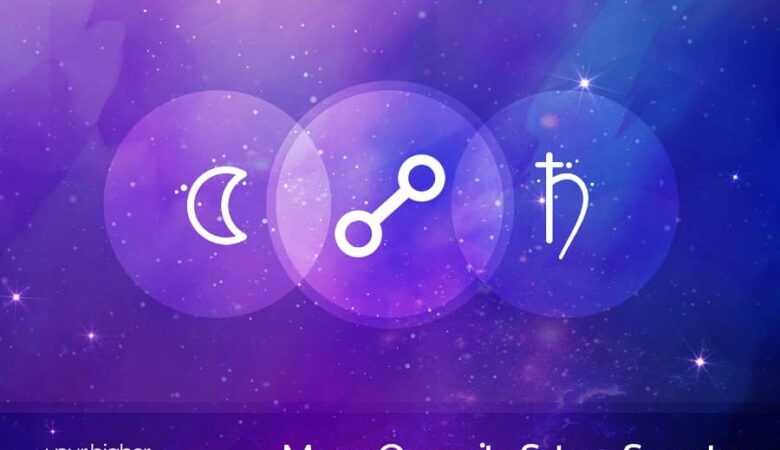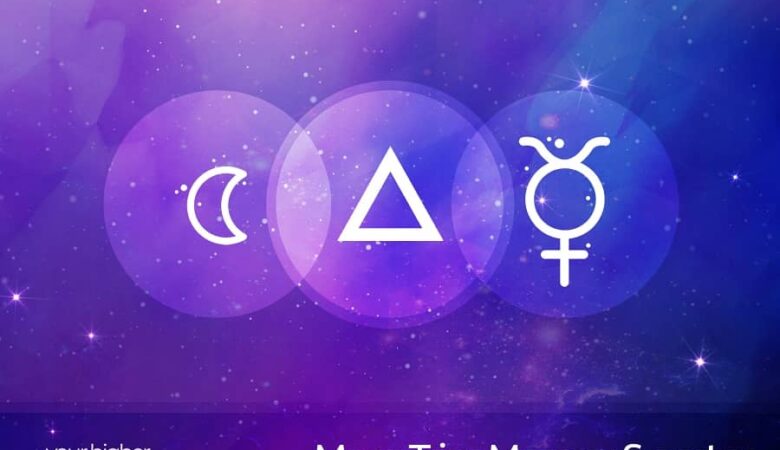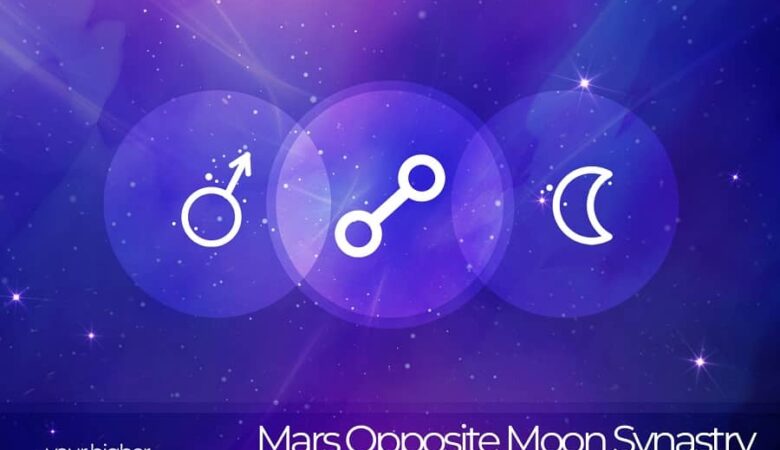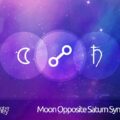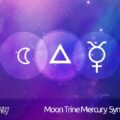If you have recently developed an interest in astrology and want to learn more about how horoscopes affect relationships, then synastry is one topic that will pique your interest.
Many people who are new to this subject matter tend to focus only on comparing how individuals with different zodiac signs would get along with one another based on their personality traits.
For example, you may have been attracted to articles with topics that explore angles like whether Leos are compatible with Geminis, or compatibility between Libras and Scorpios, and so on. However, this only tells us about the influences of star/sun signs, and that barely scratches the surface when it comes to the potential of relationships from an astrological standpoint.
Synastry, otherwise known as relationship astrology, takes on a more holistic approach. It involves comparing all the cosmic forces in the birth charts of two individuals or more, which brings to the fore areas of strength and weakness.
The information we get from synastry can promote positive interactions as well as minimize misunderstandings or conflicts. Although it is a technique used often to assess compatibility between couples who are involved romantically, synastry can also prove useful for other types of relationships. That includes relations between friends, siblings, parent and child, or even professional colleagues.
In this revealing guide, you will find a complete introduction to synastry with simple explanations. Read on for more insights into relationship astrology.
What Is The Natal Chart In Astrology?
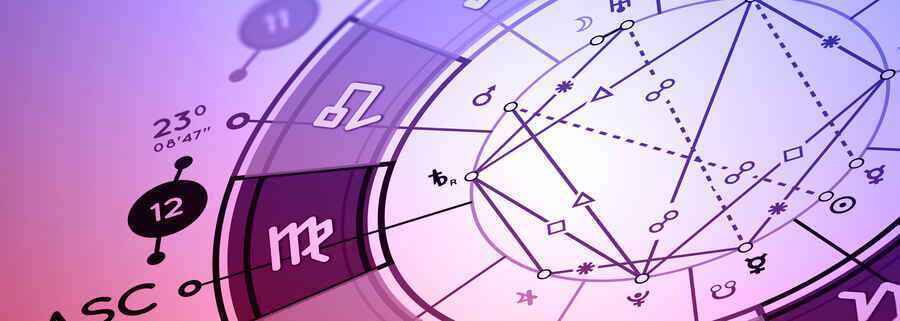
To get a better understanding of synastry, first of all, you need to know what the birth chart is in astrology. It is a diagram showing where the sun, moon, and all the planets were at the time of birth. Think of it as a map of the heavens the moment you took your first breath.
Everyone has a natal chart comprising of two luminaries (the sun & moon), a rising star (also known as Ascendant), plus eight planets, namely Mercury, Venus, Mars, Jupiter, Saturn, Uranus, Neptune, and Pluto. The position of these celestial bodies is also unique to each individual.
Even though you might have your sun in Taurus or Sagittarius, your other planets will likely be, and often are, in other signs on the zodiac wheel.
When you interact with other people, the energies of their birth charts react to yours. The resulting interplay can be harmonious, neutral, or incompatible, and this explains why people with different personalities relate to each other differently.
How Does Synastry Work?
Synastry compares the relative positions of the planets and other celestial bodies on your birth chart against that of another person. For instance, we can use this technique to assess what it would mean to have your moon sign in the same or different horoscope as the Ascendant of someone you are dating.
How Do Planets And Luminaries Affect Synastry?

Synastry interactions can create harmony or disharmony, depending on the celestial bodies involved. That is because the planets bring different energies to the fore. The house will also determine the areas of life where those energies play out between two individuals..
When it comes to love and relationships, the luminaries and some planets get more attention because of what they symbolize. For instance, Venus and Mars are the most significant planets in relationships. They both rule love and sexual chemistry, respectively, which are two factors that can determine what type of partner you would find attractive.
Mercury is pretty significant as well because it governs communication, a key component in any relationship.
The moon’s importance in synastry has to do with the fact that it controls emotions. However, its influence only becomes apparent after you get to know someone.
In contrast, the sun sign, which shapes your core personality, and the rising star or Ascendant, expressed as your demeanor, tend to affect first impressions. Therefore, aspects associated with particular planets play a significant role in synastry. They are what people will immediately notice when they first meet you.
What Are Aspects In Synastry?
In astrology, the zodiac consists of twelve signs. Each one spans an area of about 30 degrees.
On the birth chart, the sun, the moon, rising star, and other planetary forces can be closer or further apart from each other. The angular distance between different points of astrological significance is what we call aspect.
These measurements can help to make predictions about whether a particular relationship is compatible or not, depending on the celestial bodies being taken into consideration. There are five synastry aspects used to make such determinations, as explained below.
1 Conjunction
When two planets are conjunct or in conjunction with each other or any luminary (usually within six to ten degrees apart), that means they are in the same zodiac sign.
This aspect brings two planetary forces together and amplifies the corresponding energies. It can produce one of the most intense synastry interactions, depending on the planets involved.
However, it can be hard to get along when there are too many conjunctions in the birth chart because such people end up being too similar instead of complementing each other.
2 Sextile
3 Square
When two planets on the birth chart align at a 90-degree angle or perpendicularly (about three zodiac signs apart), they form a square aspect. The resulting interaction can be compelling and exciting, but too many square planets between two birth charts create stress and tension.
In most cases, planets in synastry with a square aspect urge both partners to dominate each other. More often than not, this tends to amplify the negative qualities of each person.
4 Trine
When you come across the trine aspect, it means that the planets involved are 120 degrees from each other or four zodiac signs apart. It is one of the most positive planetary correlations in synastry.
Just like the sextile aspect, trine creates harmonious blending and compatibility. However, there can be the risk of repetition or boredom because the planetary energies involved blend so seamlessly that the relationship can lack excitement or passion.
5 Opposition
Opposition planets are six zodiac signs away from each other on the birth chart. In other words, they are 180-degrees apart. The resulting formation is akin to looking at the reverse image on a mirror.
As such, planets in opposition generate a strong magnetic attraction. At the same time, opposition aspects pose a challenging interaction. The planetary energies can create an intense, powerful, and sometimes destabilizing effect.
Birth Chart Houses & Synastry: What Is The Relationship?
On the birth chart, there are also a dozen houses, each ruled by one of the twelve zodiac signs. They all represent an integral part of human existence, from health to money to relationships.
In synastry, the relative position of planets in the 1st, 5th, 7th, and 8th houses are the most important because they reveal intimate details between two birth charts.
Synastry: A Brief Summary
Synastry is a technique in astrology that provides a wealth of information regarding whether two people can get along or have a thriving relationship based on the energies of aspects between their birth charts.
However, it merely points out areas of strength and weakness, and cannot predict whether a relationship will succeed or fail. That is down to the individuals involved.
When you see incompatibilities between synastry aspects in your natal chart and that of a loved one, that doesn’t necessarily mean that things cannot work out. Even the most idyllic matches tend to show some signs of possible discord.
On the plus side, knowing potential problem areas is a good thing because it provides an opportunity to fix them.
Frequently Asked Questions About Synastry
Has your synastry chart left you with more questions than answers? Explore our comprehensive Synastry FAQ section for expert insights and clarifications on common queries.
1 What Do I Need To Create A Synastry Chart?
A synastry chart is a tool used to examine the compatibility and relationship dynamics between two people. As such, creating one requires the names of both individuals, their dates of birth, and places of birth. You can generate your own chart now with our free synastry calculator.
2 Is a Synastry Chart Accurate Without Birth Time?
A synastry chart can still provide valuable insights and information about the dynamics between two individuals, even if the exact birth times are unknown. However, there will be some limitations in the accuracy and depth of the analysis compared to charts where birth times are known.
If birth time is unknown, placements like the Ascendant (Rising Sign) and the houses cannot be precisely determined. As a result, interpretations involving those components may lack specificity. However, it is possible to analyze aspects between planets to assess compatibility and relationship dynamics without birth times.
3 What are the Best Synastry Aspects for Marriage?
In synastry, certain aspects are often considered favorable for marriage due to their potential to enhance compatibility and mutual understanding between partners. The best synastry aspects for marriage typically include strong conjunctions between personal planets such as the Sun, Moon, Venus, and Mars. Harmonious aspects like trines and sextiles between these planets can signify a deep emotional connection and compatibility. Additionally, aspects involving the Ascendant, Descendant, and the 7th house may indicate strong partnership dynamics conducive to marriage.
4 What Are the Most Important Planets in Synastry?
All planets are crucial when it comes to analyzing the synastry of two people. However, there are a few planets in particular that hold weight when examining compatibility and relationship dynamics.
These include planets Venus (indicates how a person expresses love and what they value in a partner), Mars (speaks to compatibility in terms of physical attraction), Mercury (highlights communication style), and the moon (shows how we connect on an emotional level).
5 How Do I Count House Placements in Synastry Charts?
To count house placements in synastry charts, start from each person’s Ascendant (Rising Sign), which marks the beginning of the first house. The order of the cusp segments is usually counterclockwise in Western astrology, meaning you move from the first house to the twelfth house in that direction. Each person’s birth chart is unique, so the house cusps will be in different positions based on their specific time and place of birth.
6 What Houses Are Good in Synastry?
In synastry, all 12 houses should be examined in depth for a clearer understanding of how the energies of each person’s chart manifest within the relationship and in turn, which areas of life are emphasized, activated, or challenged.
However, if you want to jump straight into the houses that bear the most influence in the realm of relationships, the “love houses” to focus on include the 5th house of pleasure, the 7th house of partnerships, and the 8th house of intimacy. The 4th house of home and family is also a vital area to concentrate on when comparing compatibility with a love interest or spouse.
7 Is Composite Chart Same As Synastry Chart?
No, although they both use natal charts, composite charts and synastry charts are different ways of analyzing relationships through the lens of astrology.
Synastry charts compare two individual birth charts laid on top of each other, focusing on house placement and the aspects (angles) between planets in each chart to see how the individuals might interact with each other.
Composite charts create an entirely new chart by finding the midpoint between each planet’s position in individual charts and then blending them. The resulting chart represents the energy of the relationship, like a third entity, and provides more insights into the relationship’s dynamics, goals, and potential outcomes.
8 How Accurate Are Synastry Charts?
Synastry charts are enlightening tools for self-awareness and exploring relationship potential. They offer valuable insights that are usually pretty spot-on. However, relationships are complex, and many factors can influence them beyond astrology, such as free will, personal experiences, and personal growth.
So, good or bad, the interpretations of a synastry chart offer insights, not predictions or guaranteed outcomes. The most essential aspect of any relationship is communication, understanding each other’s needs, and a willingness to grow together.
9 What Are the Hard Aspects of Synastry?
In synastry, ‘hard’ aspects are the ones that cause challenges in relationships, while planetary alignments that bring out harmonious energy are usually called ‘soft’ aspects.
The ‘hard’ or adversarial aspects in synastry include squares, oppositions, and sometimes conjunctions, which often cause tension or conflict within relationships.
10 Are Many Oppositions Bad in Synastry?
An opposition is usually viewed as a bad or troublesome aspect, as it pits the energies of the involved planets against each other. In a synastry chart, oppositions highlight areas where two people might naturally disagree or have contrasting approaches. So, having several opposition aspects appear within a chart will obviously stir up feelings of worry or concern among involved parties.
However, when it comes down to it, multiple oppositions are not necessarily a cause for alarm. If anything, they can be a good teacher on how to compromise, find balance, and achieve personal growth. A relationship with oppositions in synastry can still thrive by consciously talking and working through contentious matters and respecting each other’s perspectives.
11 What Are Karmic Aspects in Synastry?
In synastry, karmic aspects are certain planetary connections between two birth charts that indicate that the individuals have unresolved karma to work through in their current relationship.
For starters, planet Saturn can reveal karmic lessons, responsibilities, and challenges that must be faced and overcome. So, when Saturn makes hard aspects to personal planets (Sun, Moon, Mercury, Venus, and Mars) or angles (Ascendant, Descendant, Midheaven, IC) in synastry, it can suggest karmic obligations, restrictions, or difficult lessons that the individuals need to work through together.
Other synastry aspects that carry karmic implications include alignments between the north and south nodes (also known as lunar nodes) and personal planets. Lunar nodes are sensitive points in the birth chart associated with past-life karma and soul growth. As such, when one person’s planets form square and opposition aspects with another individual’s nodal axis, it can point to karmic patterns that need addressing in the relationship.

